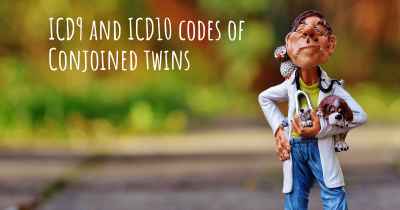What is the life expectancy of someone with Conjoined twins?
Life expectancy of people with Conjoined twins and recent progresses and researches in Conjoined twins

Conjoined twins are a rare phenomenon where two individuals are physically connected at birth. The life expectancy of conjoined twins varies greatly depending on the specific circumstances and the extent of their shared anatomy. Factors such as the type and location of the connection, the organs they share, and the availability of medical interventions play crucial roles. Some conjoined twins can undergo successful separation surgeries, allowing them to lead relatively independent lives. However, the prognosis can be challenging, and the risks associated with such procedures are high. It is important to note that each case is unique, and the outcome depends on numerous medical and individual factors, making it difficult to provide a specific life expectancy range.
Conjoined twins, also known as Siamese twins, are a rare phenomenon where two babies are born physically connected to each other. This occurs when a fertilized egg partially splits into two embryos, but the separation is incomplete. The extent and location of the connection can vary greatly, and it plays a significant role in determining the life expectancy and overall health of conjoined twins.
Life expectancy for conjoined twins can vary widely depending on several factors, including the type of connection, the organs shared, and the overall health of the twins. It is important to note that there is no fixed life expectancy for all conjoined twins, as each case is unique.
Conjoined twins can be classified into different types based on the area of connection. The most common types include:
- Thoracopagus: Twins joined at the chest, often sharing the heart and other vital organs.
- Craniopagus: Twins joined at the head, which can involve sharing parts of the skull and brain.
- Omphalopagus: Twins joined at the abdomen, often sharing the liver and other digestive organs.
- Parasitic twins: A rare form where one twin is significantly smaller and dependent on the other.
The prognosis for conjoined twins depends on various factors, including the complexity of the connection, the presence of shared vital organs, and the availability of medical interventions. In some cases, separation surgery may be possible, but it carries significant risks and is not always feasible.
Survival rates for conjoined twins have improved over the years due to advancements in medical technology and surgical techniques. However, the overall survival rate remains relatively low, especially for twins with complex connections and shared vital organs.
Many conjoined twins face numerous medical challenges throughout their lives. The shared organs and circulatory systems can lead to complications such as heart defects, respiratory issues, and infections. Additionally, the physical limitations imposed by the connection can hinder mobility and normal development.
Early intervention and specialized medical care are crucial for improving the chances of survival and enhancing the quality of life for conjoined twins. A multidisciplinary team of healthcare professionals, including surgeons, pediatricians, and therapists, work together to provide comprehensive care and support.
It is important to approach each case individually when discussing life expectancy for conjoined twins. Some twins with less complex connections and shared organs may have a better prognosis and can lead relatively normal lives with appropriate medical interventions. On the other hand, twins with more intricate connections and vital organ sharing may face significant challenges and have a shorter life expectancy.
Emotional and psychological support is also crucial for conjoined twins and their families. Living with a unique condition like conjoined twinning can bring about various social and emotional challenges. Providing a nurturing and inclusive environment is essential for their overall well-being.
In conclusion, the life expectancy of conjoined twins varies greatly depending on the specific circumstances of each case. While advancements in medical care have improved survival rates, the prognosis remains uncertain and highly individualized. The support of a dedicated medical team, along with emotional and psychological support, plays a vital role in the well-being and quality of life for conjoined twins.








